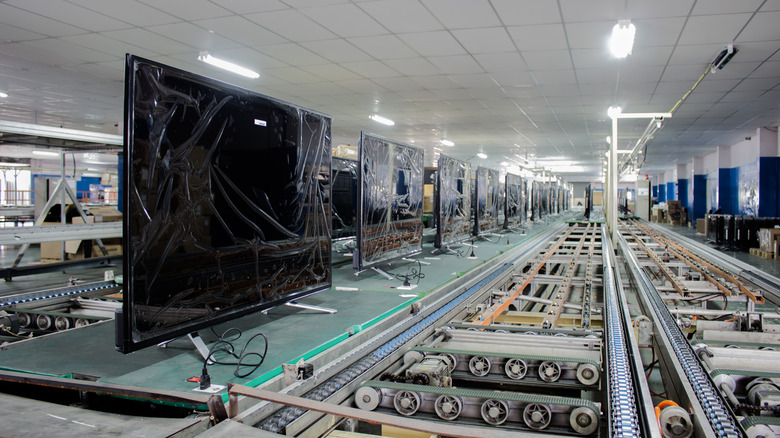When you spot a Hisense TV on sale alongside budget-friendly models from brands like TLC, it raises a reasonable question: Why is Hisense significantly cheaper than household names like LG or Sony? The answer to that starts with the company that makes Hisense TVs, where they are made, and the strategy that drives their market positioning. Founded in Qingdao, China, in 1969 as a radio manufacturer, Hisense turned to TV production a decade later and quickly developed a major infrastructure in China. Their manufacturing footprint is global, though, with plants in Mexico, Slovenia, and South Africa. This gives the company a production advantage not always available to brands rooted in Japan or South Korea, or those heavily reliant on third-party supply chains.
Rather than directly clashing with the high-margin premium tiers dominated by big-name brands like Samsung and Sony, Hisense instead competes in the same space as TLC, with large output, razor-thin margins, and aggressive pricing. It seems that Hisense accepts a lower margin on TVs in order to gain market share and scale. In short, you’ll find a Hisense TV on the shelf because the company chooses to sit below brand-name stereotypes and compete on cost and value rather than on prestige.
The Hisense business model makes their TVs cheaper
The low price tag on many Hisense TV models, like the U8QG, is the result of several interlocking strategic decisions. First among them is vertical integration. Hisense manufactures large portions of its own components, especially panels, within its vast production system. According to industry listings, the company’s primary manufacturing hub in Qingdao alone covers more than 12 square kilometers and handles large-volume LCD panel output. By controlling panels and other modules internally, the company avoids the huge costs that independent suppliers might impose, which helps lower the production cost of the final product.
Secondly, the business model plays a significant role. Hisense is willing to endure smaller mark-ups and leverage scale. The company’s manufacturing cost may not be very different from mainstream brands, but the retail margin is smaller. That’s because the company is happy to take a hit to bolster brand awareness and sales volume. This model places them closer to a cost-leader strategy with high sales volume but lower profit per unit. The competition from other value brands pushes prices further downward, and Hisense plays in that zone.
Additionally, the simplification of features on lower-priced models helps keep prices down. While premium Hisense lines may boast Mini-LEDs, quantum dot color, and 120Hz refresh rates, their more affordable setups use mid-range hardware, fewer premium black-light zones, and less expensive materials. This helps them sell their smart TVs at low prices. Additionally, Hisense (like other smart TV makers) may monetize data collection (advertising, data analytics, content recommendation services) in a way that helps offset hardware costs and allows for lower pricing.
The quality and features of Hisense TVs
From a technical perspective, Hisense manages to deliver impressive spec sheets relative to price, but some trade-offs influence both cost and user experience. Some Hisense TVs, like the U7QG, are praised for offering peak brightness, good HDRMI 2.1 support, VRR, and 120Hz refresh in mid-tier models, features that were reserved for high-end TVs until recently. This shows the company is investing in display quality, especially in its higher lines.
However, design practices on the low-end models reflect the cost-oriented strategy. Cheaper Hisense models might use lighter plastic materials, fewer back-lighting zones, less uniform panel coating, or fewer premium components (such as processors) than flagship models from Samsung or Sony. That means while you may get great value, you may also face limitations such as slightly less uniform brightness levels, fewer features, and a shorter life expectancy, things which have led to some frustrated customers and even a class action lawsuit against them, claiming they falsely advertised some TVs as QLEDs.
Another factor is that Hisense manufactures some components in China, where the labor and logistics costs are significantly lower compared to companies manufacturing in more expensive locales or relying on external suppliers. This cost advantage gets passed down into the price. In addition, by targeting market segments where brand premium is lower, the quality requirements can be optimized rather than maximized. The result is a lower up-front purchase price.
To summarize, while Hisense TVs may not always match absolute build refinement or brand prestige, they leverage smart manufacturing, supply-chain control, scale, and feature prioritization to deliver good value. Those trade-offs in component quality and margin allow them to sit in lower price tiers without being as cheap as their costs might imply.











